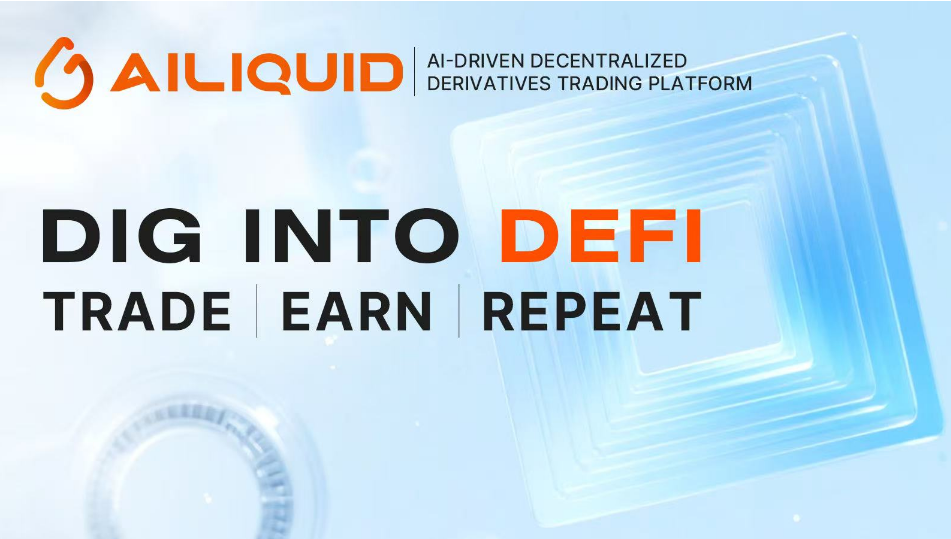A New Chapter in DeFi Incentives
Decentralized exchanges have long dangled token rewards in front of traders, hoping to lure volume and liquidity. The tactic worked spectacularly, at first. From the heyday of “swap mining” on the earliest AMM pools to the frenetic trading campaigns of 2021, traders discovered that simply moving assets back and forth could pay handsomely. Very quickly, however, protocols learned that raw turnover was a blunt instrument. Robots washed trades through pools to farm tokens, spreads widened as artificial volume spiked volatility, and genuine market‑making was often crowded out by noise.AILiquid’s Smart Mining program is a response to that history. Rather than asking how much a wallet trades, it tries to understand how well that wallet trades and, more importantly, what the trading activity contributes to overall market health. The program has been quietly logging live orders since the end of June, long before any public launch of token rewards, so the data set would reflect authentic behaviour. All of it feeds a scoring engine designed to convert intelligent, risk‑aware participation into tangible ownership of the protocol.

From Volume Wars to Value Wars
The first wave of incentive schemes treated every swap, every limit fill, every market order as equal. By paying tokens per dollar of throughput, they unintentionally invited a game that savvy actors could exploit. Circular trades between a handful of addresses masked as real volume, and protocols paid out huge sums of governance tokens for activity that produced little liquidity. Worse, those newly minted tokens often hit the market immediately, depressing price and diluting long‑term holders.AILiquid’s architects came from quantitative trading desks where quality of execution, not just size, defines edge. They mapped that philosophy onto an on‑chain order book. Each recorded trade includes much richer context than price and size: how far the order rested from the mid‑price, whether it added or removed liquidity, how long it stayed on the book, and how it affected the trader’s overall profit and loss profile. By combining those data points, the protocol can judge whether an account is genuinely helping to tighten spreads and absorb volatility, or merely churning volume.
The Heart of the System: A Continuous Trader Quality Score
Every order that hits AILiquid’s matching engine passes through a machine‑learning pipeline housed in what the team calls the AIRC Risk‑Control Centre. There, algorithms trained on historical tick data assign a sliding “quality” value to the trade in real time. A fill that narrows the bid–ask spread, for instance, scores higher than a taker order that lifts liquidity at a premium. A position that generates steady, volatility‑adjusted profits is valued more than one that wins big on a single gamble and then retires.Instead of waiting for the end‑of‑day or end‑of‑week batch calculations, the engine publishes succinct cryptographic commitments of updated scores roughly every quarter of an hour. Those commitments are verified on‑chain, so no one, not even protocol developers can tamper with the ledger. The result is a living reputation metric for each address, transparent enough for the community to audit, yet efficient enough to keep gas overhead negligible.
When token rewards begin distribution in mid‑July, they will be allocated according to these cumulative quality scores. High‑scoring wallets receive a larger slice of the CCC pie; low‑scoring ones get much less, no matter how gigantic their headline volume. Crucially, the system also imposes diminishing returns: after a certain threshold, simply scaling trade size yields very little extra reward. That design choice is deliberate; it nudges whales toward thoughtful liquidity placement instead of brute‑force wash loops.
Guarding Against the Usual Suspects
Designing a points system is one thing; protecting it from abuse is another. AILiquid weaves several layers of defence into Smart Mining so bad actors face an uphill battle.First, diversity matters. A wallet that interacts with the same two counterparties all day will see its score decay, because high‑quality markets normally involve a wide mix of participants. That entropy check makes it cost‑prohibitive to spin up a small cluster of addresses and keep traffic in‑house.
Second, the engine examines gas‑adjusted return on investment. If a pattern burns more in transaction fees than it could plausibly earn from price discovery or fee rebates, it is flagged as likely artificial and awarded scant points.
Third, profitability is benchmarked against implied volatility. A trader who ekes out modest gains during a calm regime but avoids steep drawdowns when the market storms is seen as providing stability. Flash‑in‑the‑pan windfalls, on the other hand, hover near zero when volatility explodes, betraying a lottery‑ticket strategy that adds little resilience.
By combining behavioural analytics with traditional statistical checks, AILiquid expects wash‑trading to become economically irrational. Early test‐net simulations support that expectation: ping‑pong bots that once dominated volume campaigns on other exchanges earned less than one half of one percent of prospective CCC rewards under the new scoring model.
Incentives as a Flywheel, Not a Faucet
Smart Mining is budgeted to distribute roughly one third of total CCC supply over four years, with the largest drops front‑loaded to ignite boot‑strap momentum. Yet even at peak emission, the program will not operate like a faucet stuck on full blast. Tokens vest over three months, damping sudden sell pressure, and each newly minted coin can immediately be staked in AILiquid’s Vault to earn a share of daily trading fees. In other words, miners can convert earned CCC into a yield‑bearing asset without ever leaving the ecosystem.The designers hope that feedback loop creates a virtuous cycle: high‑skill traders win more CCC; staking that CCC lifts their passive income; the boost in net performance encourages them to scale activity further, deepening liquidity, which in turn raises fee revenue for everyone else. Provided the chain’s throughput remains high and the AI engine keeps misbehaviour at bay, the outcome should be a marketplace where incentives map directly to healthier order books.
Timeline and What Comes Next
Although every trade since late June already earns provisional points, the public interface that lets users track their standing will go live alongside the first official reward drop, targeted for the third week of July. Thereafter, weekly snapshots will recalibrate rankings, and token distribution will roll out in regular cycles, much like dividend dates in traditional finance.Looking further out, the data generated by Smart Mining opens intriguing possibilities. Addresses that consistently rank in the top tier could be invited to run managed strategy vaults, similar to Hyperliquid’s model but with a built‑in skill filter. Maker‑taker fees might one day scale dynamically according to trader quality: the best liquidity providers would pay nothing to post orders, or even earn rebates, while takers with poor risk discipline might see steeper costs. The community will be able to propose such tweaks through CCC governance, adjusting the relative weight of profitability versus liquidity contribution or introducing new factors altogether.
Closing Thoughts: Merit as the New Metric
If DeFi 1.0 taught protocols how to attract capital, DeFi 2.0 must learn how to retain it without waste. AILiquid’s Smart Mining experiment is a bold attempt to turn the faucet of token emissions into something closer to a laser‑guided drip system, targeting traders who make markets sturdier rather than simply busier. Whether the approach will scale under full main‑net load and withstand the next black‑swan sell‑off remains to be proven. Yet by shifting the conversation from volume to value, AILiquid is staking a claim for what tomorrow’s trade‑to‑earn models might look like: AI watchdogs, real‑time reputational scoring, and incentives that reward more than a swollen transaction counter.For now, every order matters. Each narrow spread set, each disciplined exit, each minute‑long resting bid is a quiet signal recorded on-chain, accruing toward a future where traders are paid not for how often they swing, but for how cleanly they connect. If Smart Mining succeeds, the dull roar of wash‑trading may at last give way to the sharper, steadier hum of true market‑making, proof that the best way to earn tokens is, simply, to trade well.

